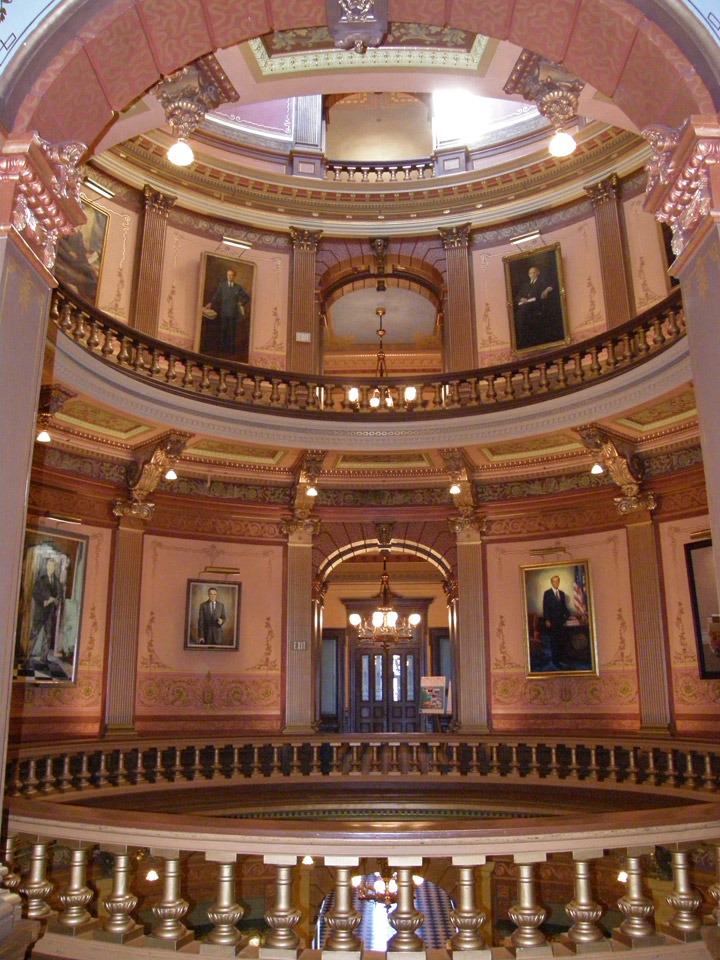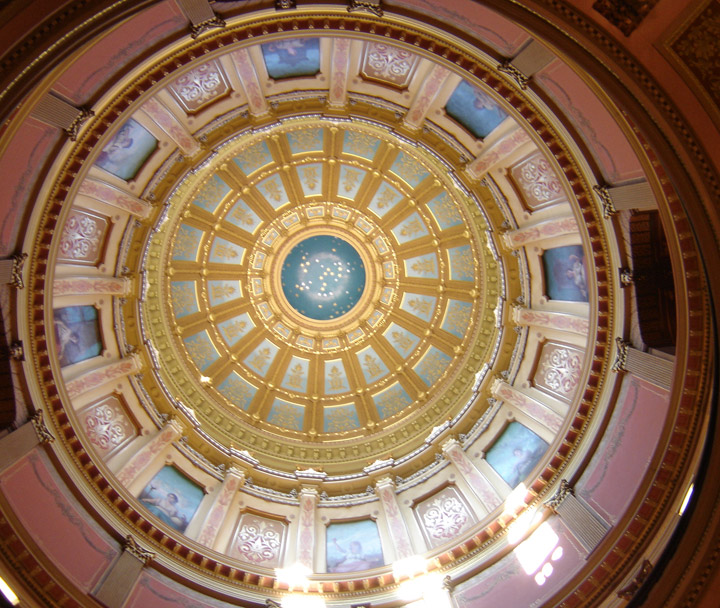

Lansing
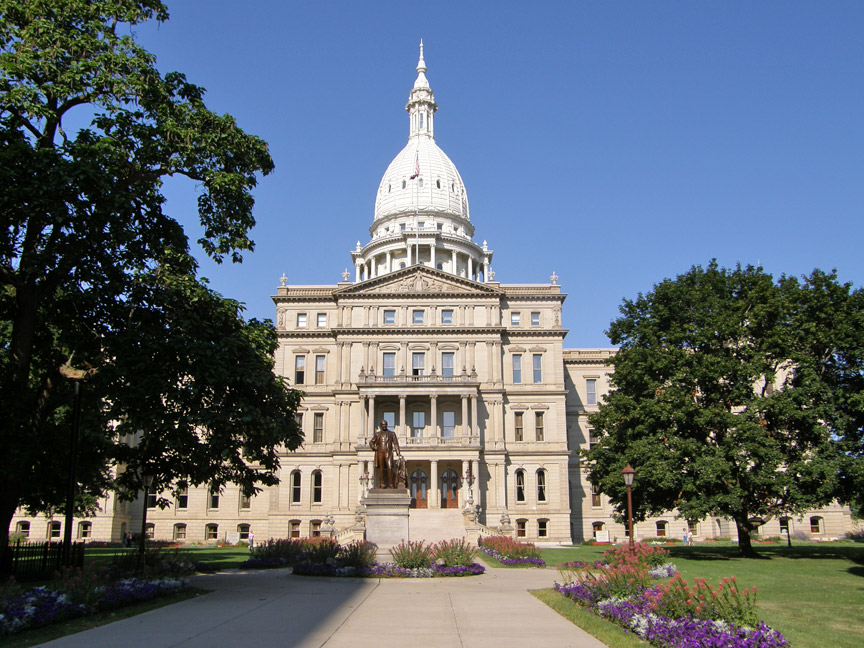
Michigan state capital
Lansing is the capital city of the U.S. state of Michigan, and the state's sixth largest city. It is located mostly in Ingham County, although small portions of the city extend into Eaton County. As of the 2000 census, it has a population of 119,128, an Urbanized Area (UA) population of 300,032, and, as of July 1, 2007, a Metropolitan Statistical Area (MSA) population of 456,440. The even larger Combined Statistical Area (CSA) population, which includes Shiawassee County, is estimated at 528,193.
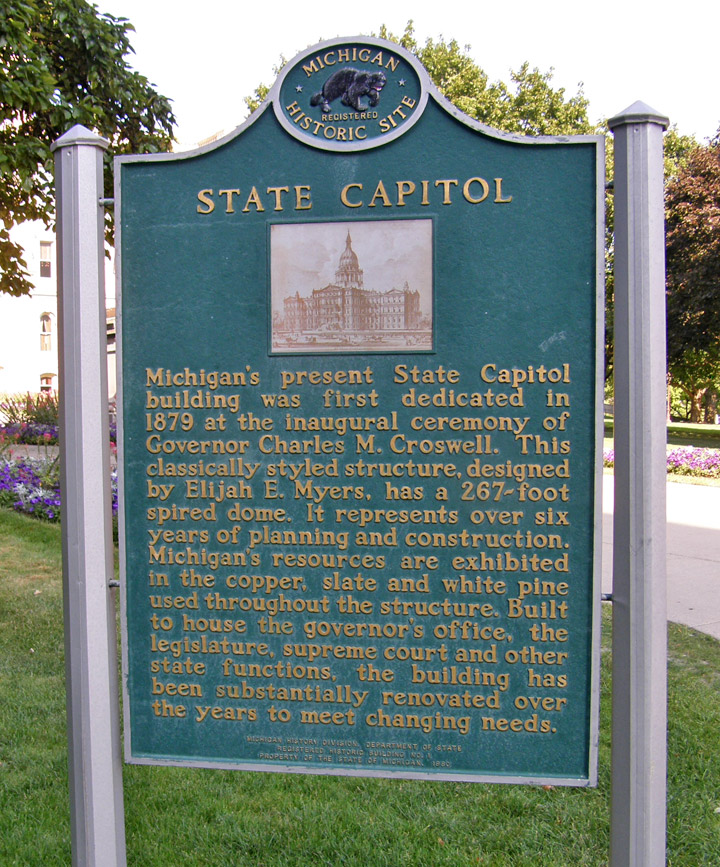
The Lansing metropolitan area, colloquially referred to as "Mid-Michigan," is an
important center for educational, cultural, governmental, business, and
high-tech manufacturing institutions, including three medical schools (two human
medicine and one veterinary), two nursing schools, two law schools, a Big Ten
Conference university (Michigan State), the state capital, the state Supreme
Court and Court of Appeals, a federal court, the Library of Michigan and
Historical Center, and headquarters of four national insurance companies.
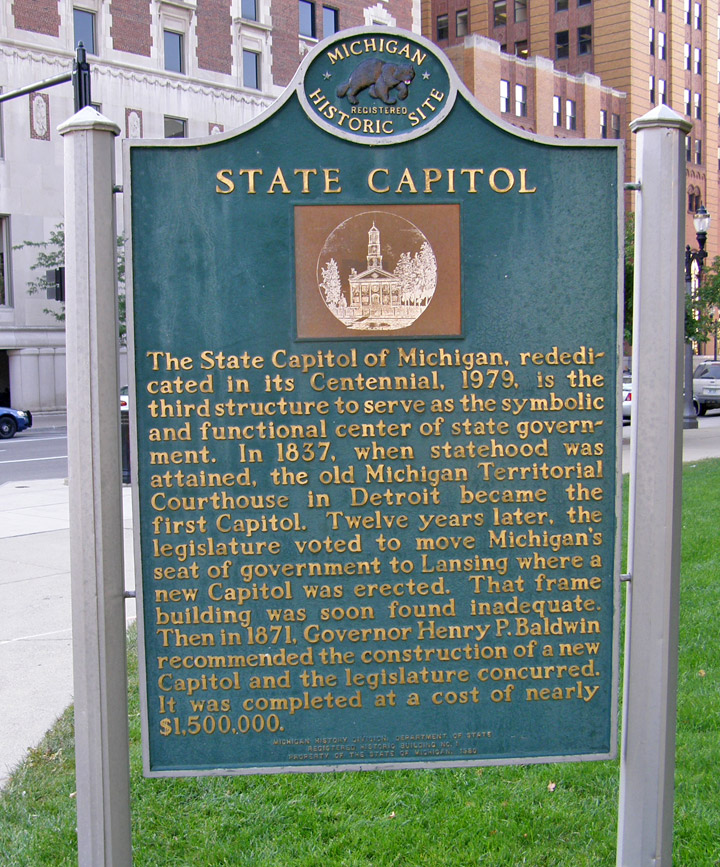
The area that is now Lansing was originally surveyed in 1825 in what was then
dense forest. There would be no roads to this area for decades to come.
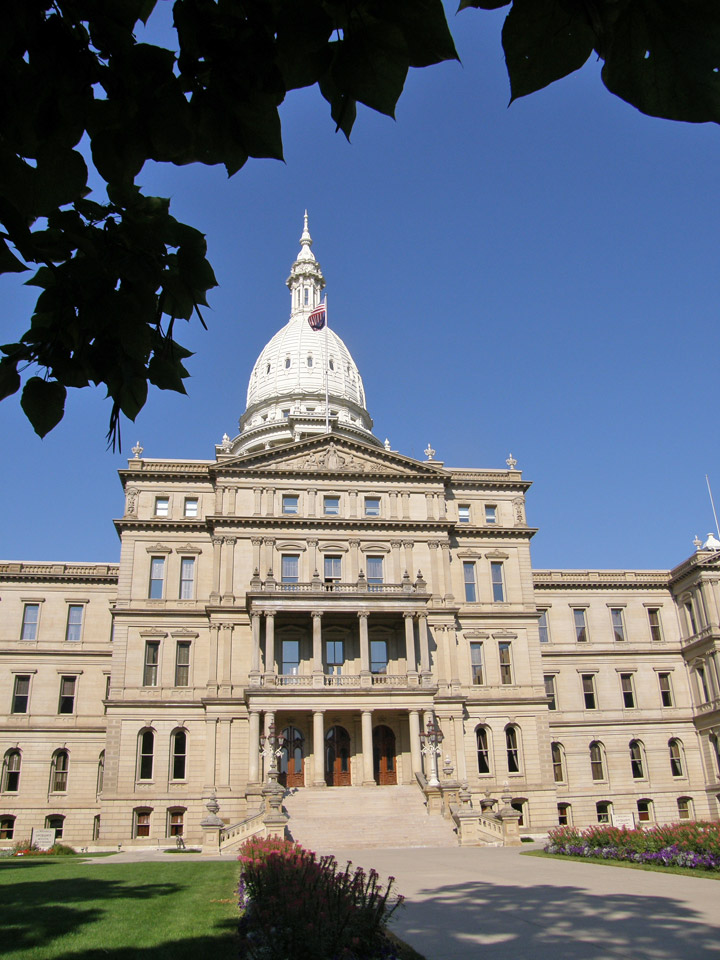
In the winter of 1835 and early 1836, two brothers from New York plotted the
area now known as REO Town just south of downtown Lansing and named it "Biddle
City." All of this land lay in a floodplain and was underwater during the
majority of the year. Regardless, the brothers went back to New York,
specifically Lansing, New York, to sell plots for the town that did not exist.
They told the residents of Lansing, New York that this new "city" had an area of
65 blocks, contained a church and also a public and academic square. A group of
16 men bought plots in the nonexistent city and upon reaching the area later
that year found they had been scammed. Many in the group too disappointed to
stay ended up settling around what is now Metropolitan Lansing. Those who stayed
quickly renamed the area "Lansing Township" in honor of their home village in
New York.
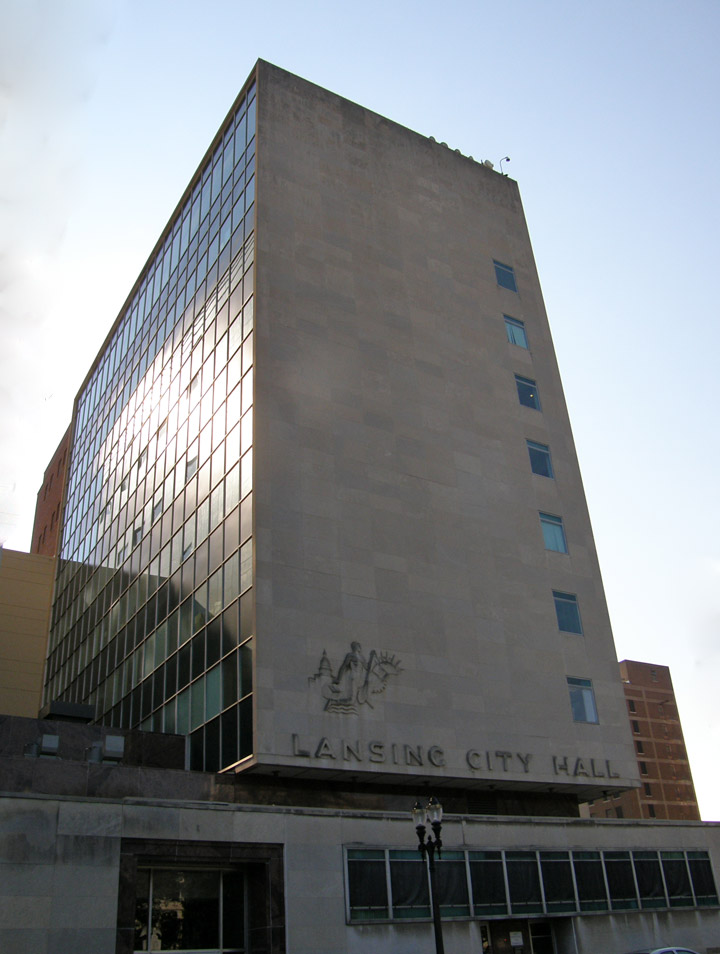
Lansing City Hall
The sleepy settlement of fewer than 20 people would remain dormant until the winter of 1847 when the state constitution required that the capital be moved from Detroit to a more centralized and safer location in the interior of the state since many were concerned about Detroit's close proximity to British-controlled Canada, which had captured Detroit in the War of 1812. The United States had recaptured the city in 1813, but these events led to the dire need to have the center of government relocated away from hostile British territory. In addition, there was also concern with Detroit's strong influence over Michigan politics, being the largest city in the state as well as the capital city.
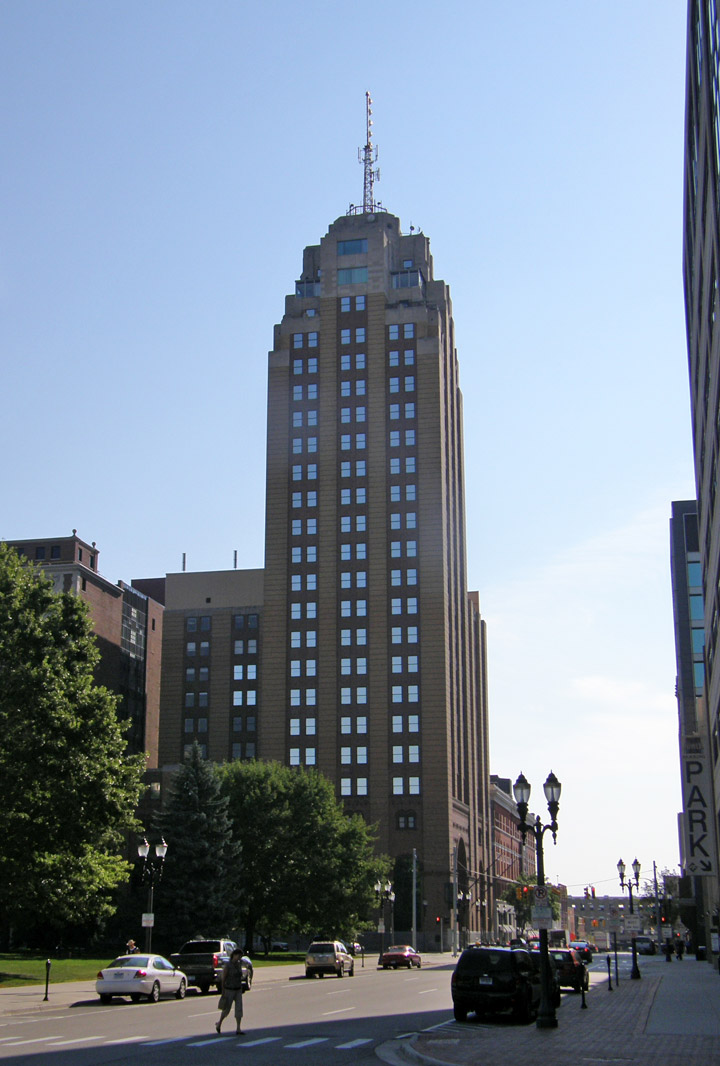
downtown commercial building
During the multi-day session to determine a new location for the state capital, many cities, including Ann Arbor, Marshall, and Jackson, lobbied hard to win this designation. Unable to publicly reach a consensus due to constant political wrangling, the Michigan House of Representatives privately chose the Township of Lansing out of frustration. When announced, many present openly laughed that such an insignificant settlement was now the capital city of Michigan. Two months later, the governor William L. Greenly signed into law the act of the legislature officially making Lansing Township the state capital.
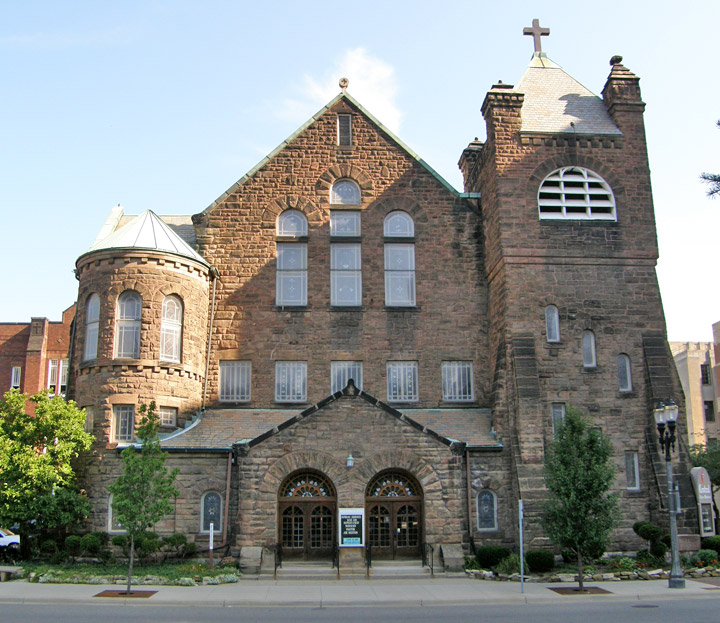
church in the local stone style
With the announcement that Lansing Township had been made the capital, the small village quickly transformed into the seat of state government. The legislature gave the settlement the temporary name of the "Town of Michigan." In April 1848, the legislature then gave the settlement the name of "Lansing." Within months after it became the capital city, individual settlements began to develop along three key points along the Grand River in the township.
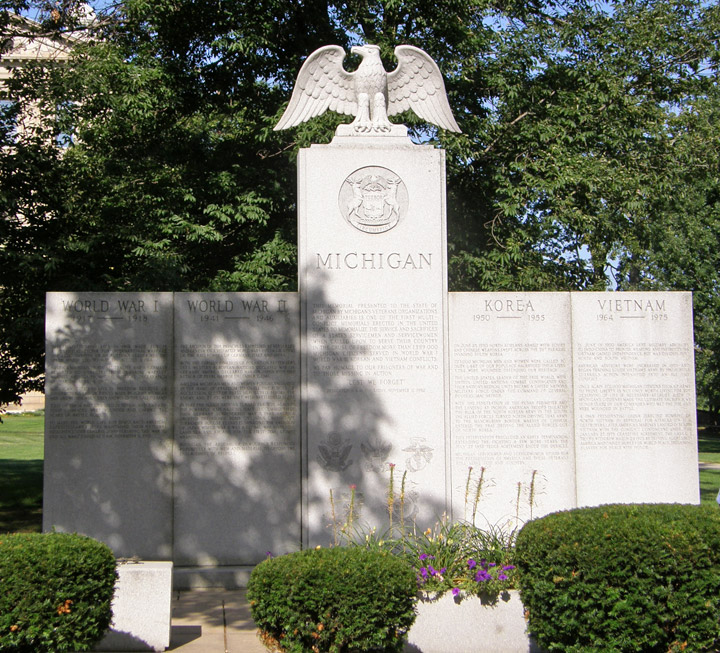
war memorial
"Lower Village/Town," where present-day Old Town stands, was the oldest of the three villages. It was home to the first house built in Lansing in 1843 by pioneer James Seymour and his family. Lower Town began to develop in 1847 with the completion of the Franklin Avenue (now Grand River Avenue) covered bridge over the Grand River.
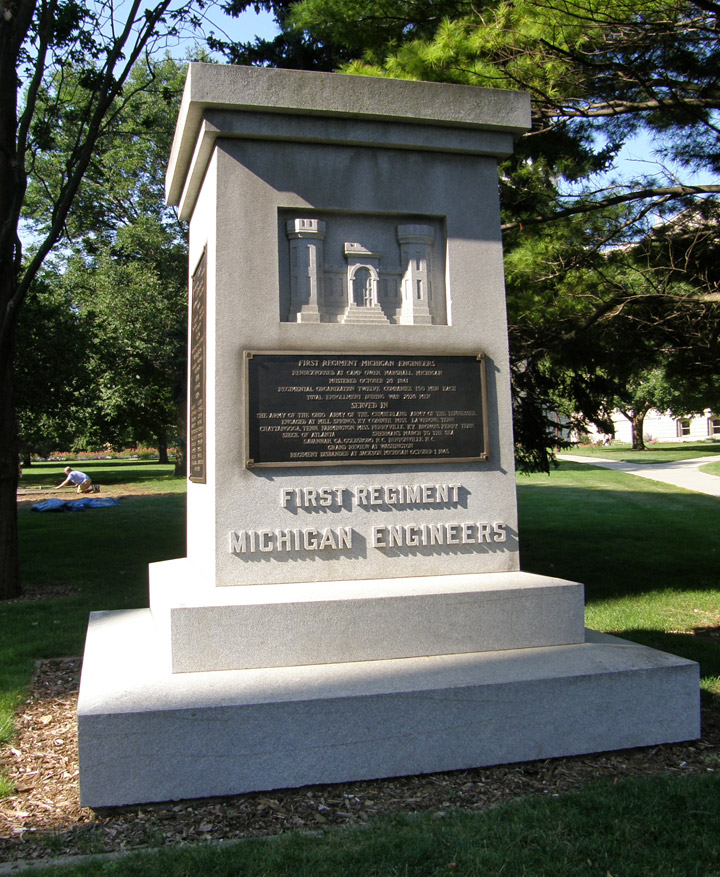
Civil War Michigan Engineers
"Upper Village/Town," where present-day REO Town stands at the confluence of the Grand River and the Red Cedar River. It began to take off in 1847 when the Main Street Bridge was constructed over the Grand River. This village's focal point was the Benton House, a 4-story hotel which opened in 1848. It was the first brick building in Lansing and was later razed in 1900.

Michigan state capital
"Middle Village/Town," where downtown Lansing now stands, was the last of the three villages to develop in 1848 with the completion of the Michigan Avenue bridge across the Grand River and the completion of the temporary capitol building which sat where Cooley Law School stands today on Capitol Avenue in between Allegan and Washtenaw Streets, and finally the relocation of the post office to the village in 1851. This area would grow to become larger than the other two villages up and down river. For a brief time the combined villages were referred to as "Michigan" but was officially named Lansing in 1848.
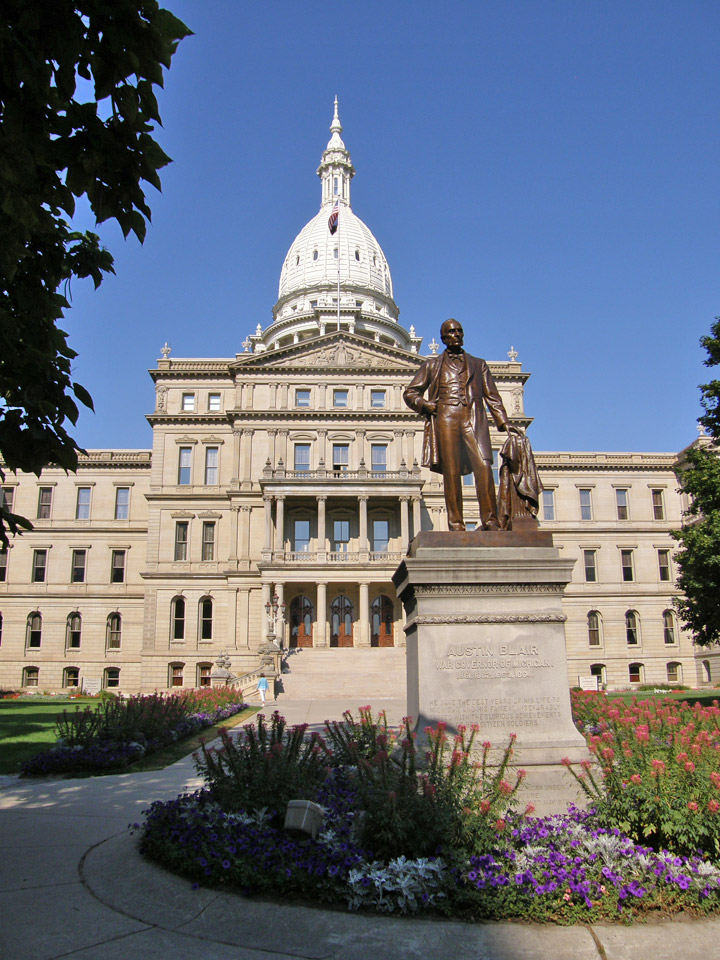
In 1859, the settlement having grown to nearly 3,000 and encompassing about 7
square miles (18 km2) in area was incorporated as a city. The boundaries of the
original city were Douglas Avenue to the north, Wood and Regent Streets to the
east, Mount Hope Avenue to the south, and Jenison Avenue to the west. These
boundaries would remain unchanged until 1916. Lansing began to grow steadily
over the next two decades with the completion of the railroads through the city,
a plank road, and the completion of the current capitol building in 1878.
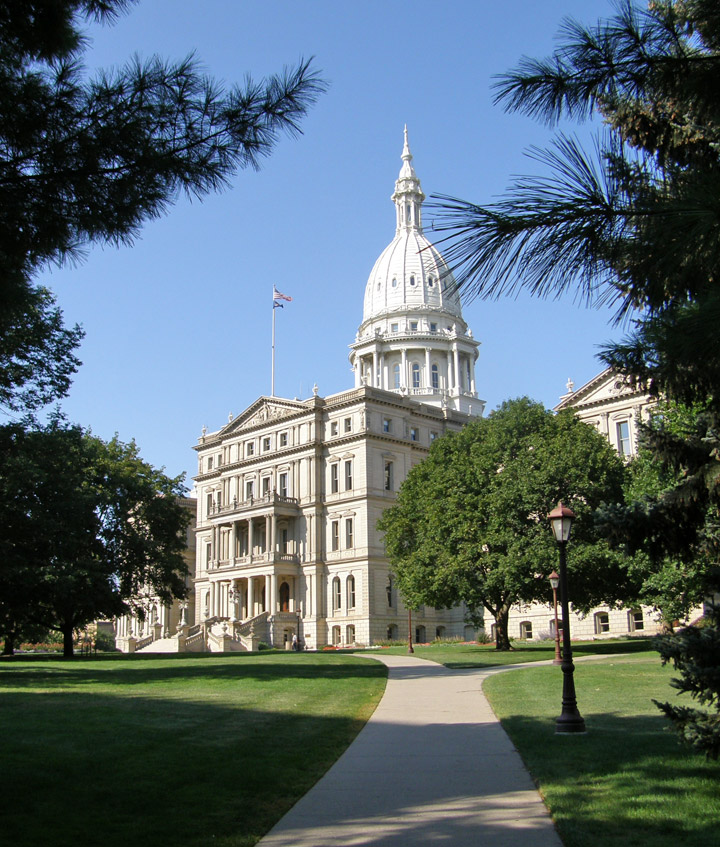
Most of what is known as Lansing today is the direct result of the city becoming
an industrial powerhouse which began with the founding of Olds Motor Vehicle
Company in August 1897. The company went through many changes, including a
buyout, between its founding to 1905 when founder Ransom E. Olds started his new
company REO Motor Car Company, which would last in Lansing for another 70 years.
Olds would be joined by the less successful Clarkmobile around 1903. Over the
next decades, the city would see itself transformed into a major American
industrial center for the manufacturing of automobiles and automobile parts
among other industries. The city continued to grow in area too. By 1956, the
city had grown to 15 square miles (39 km2), and doubled in size over the next
decade to its current size of roughly 33 square miles (85 km2).
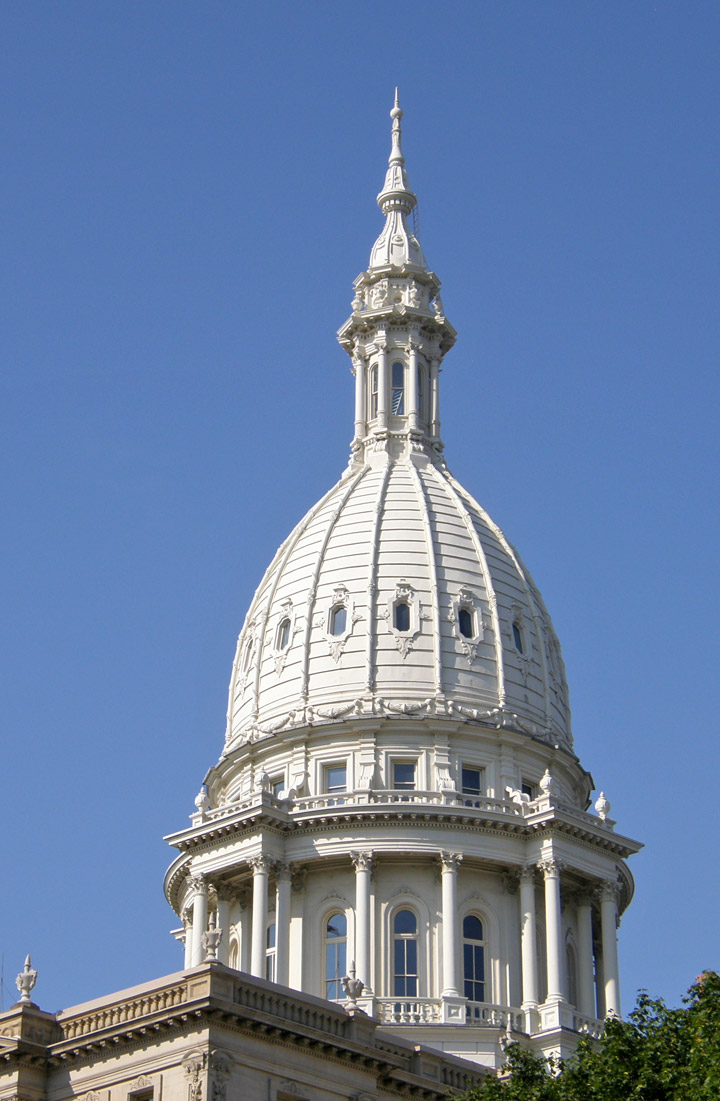
Today, the city's economy is now diversified among government service,
healthcare, manufacturing, insurance, banking, and education.
Text from Wikipedia
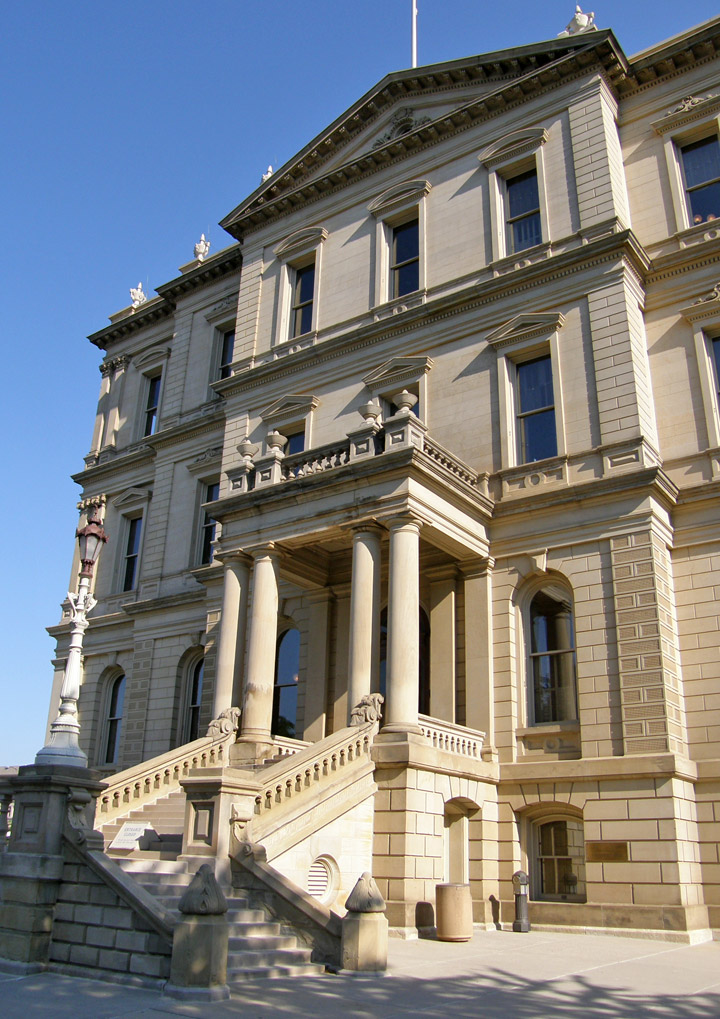
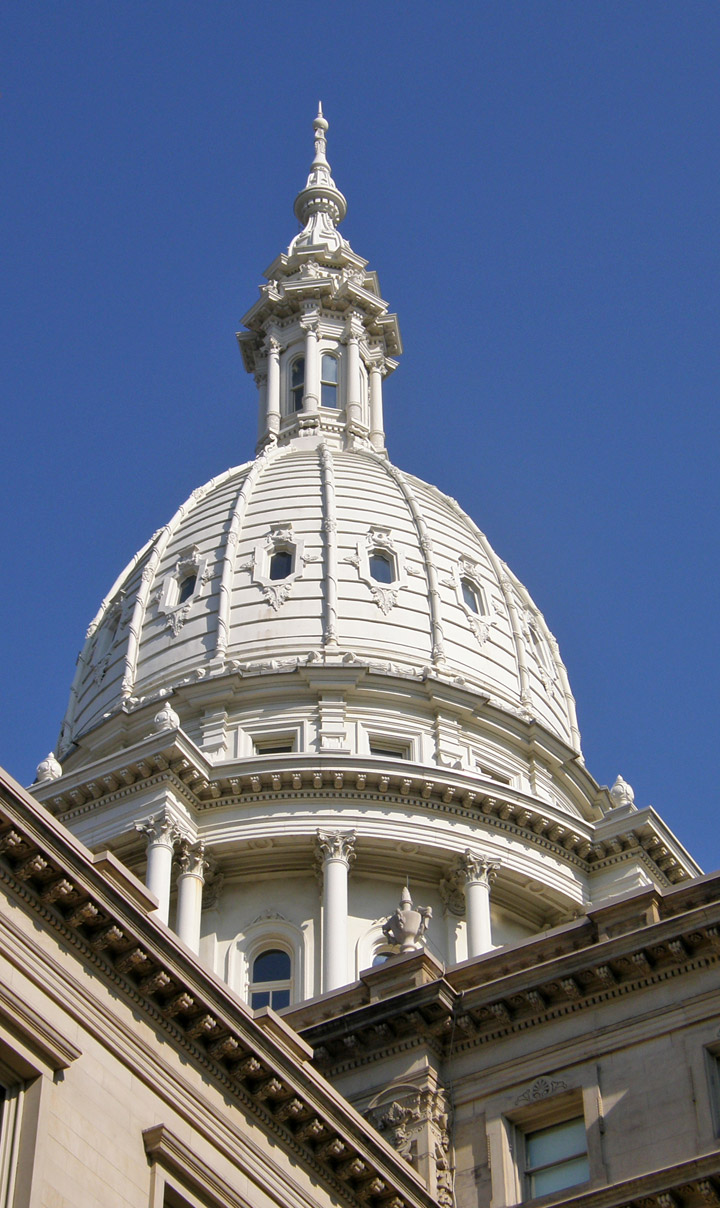
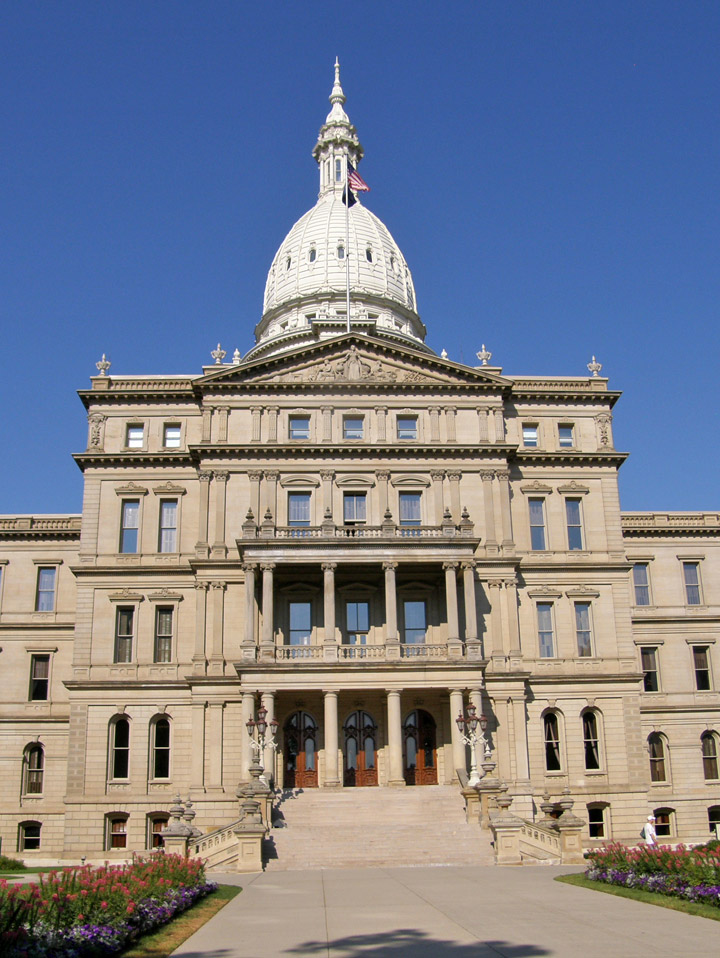
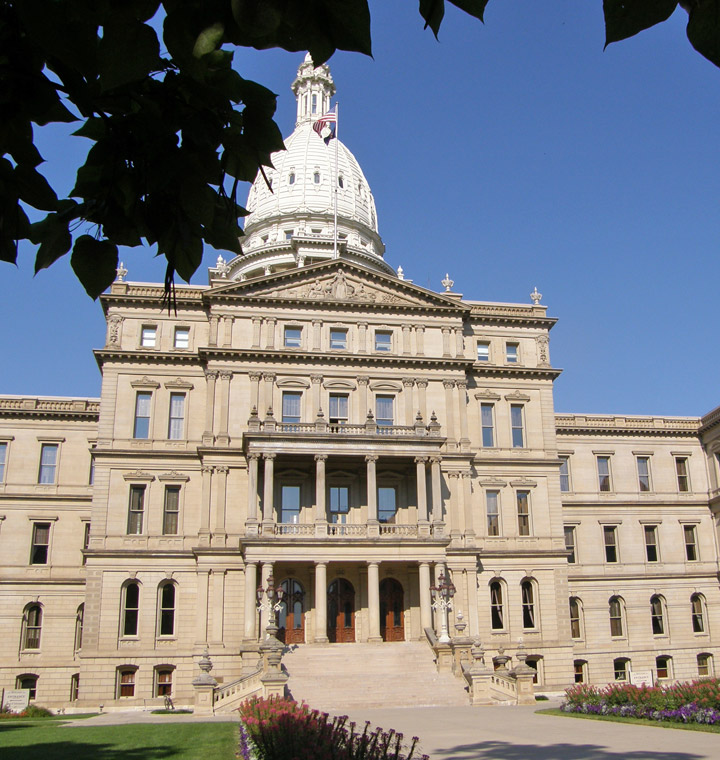
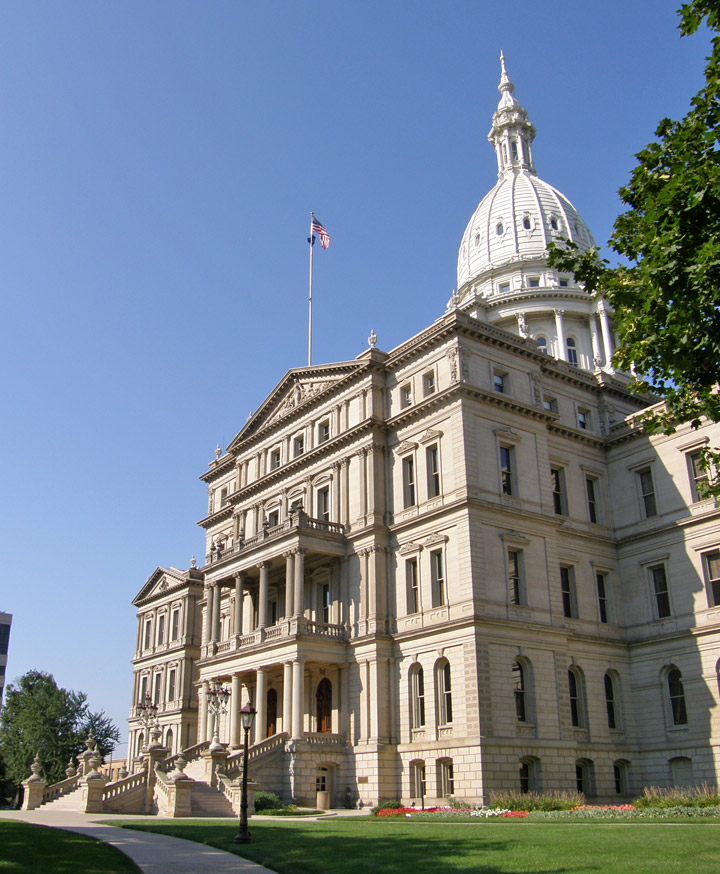
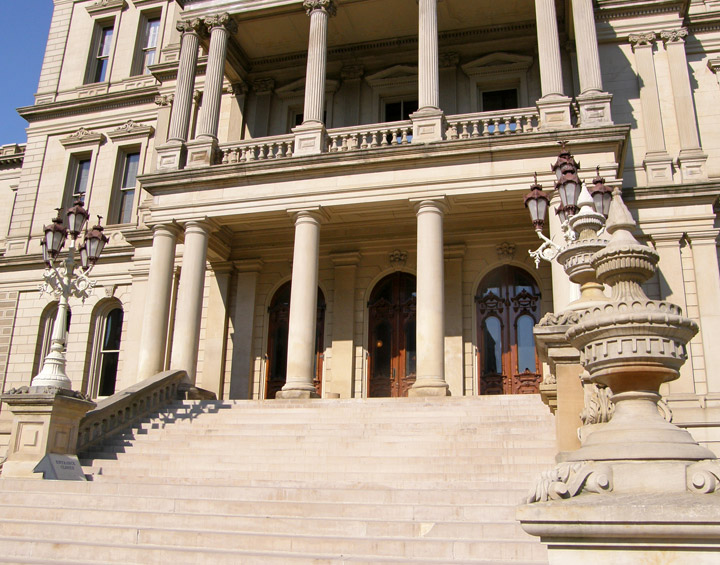

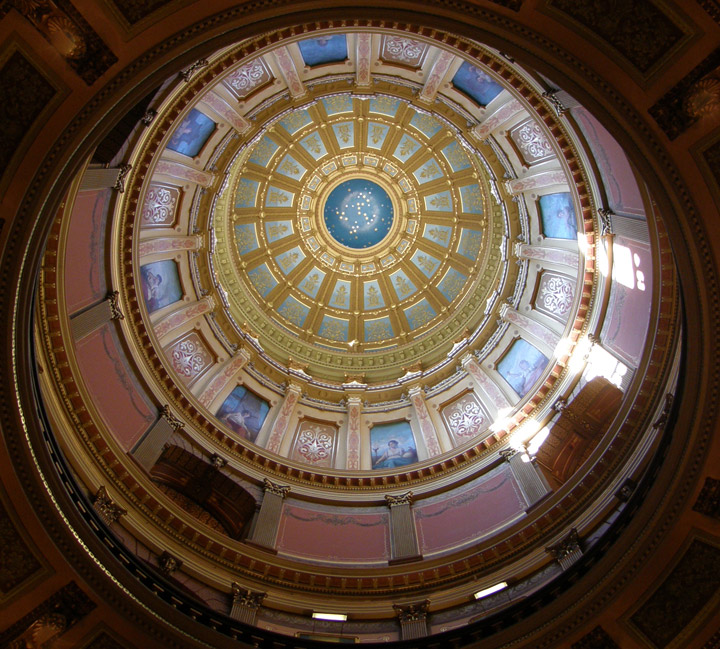
capital dome
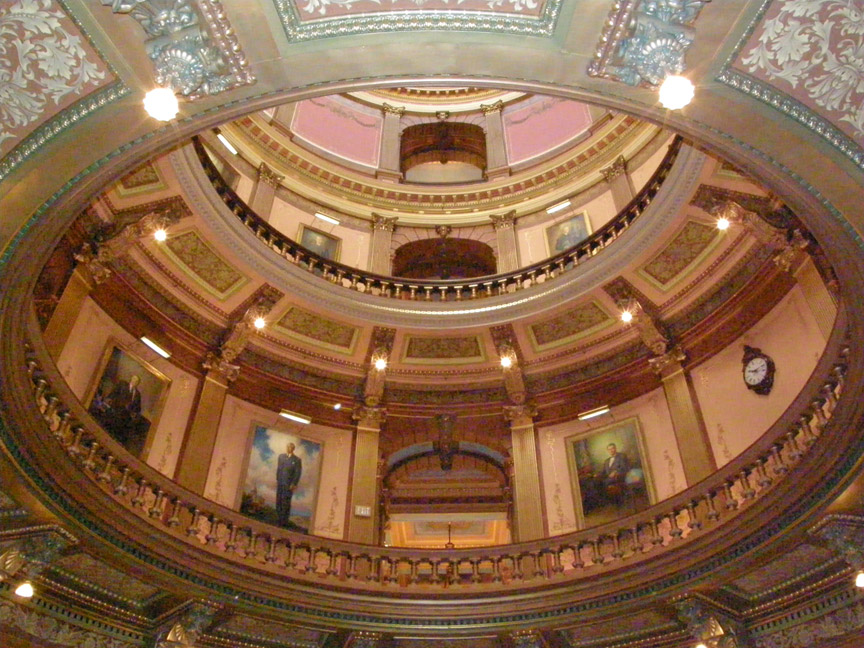
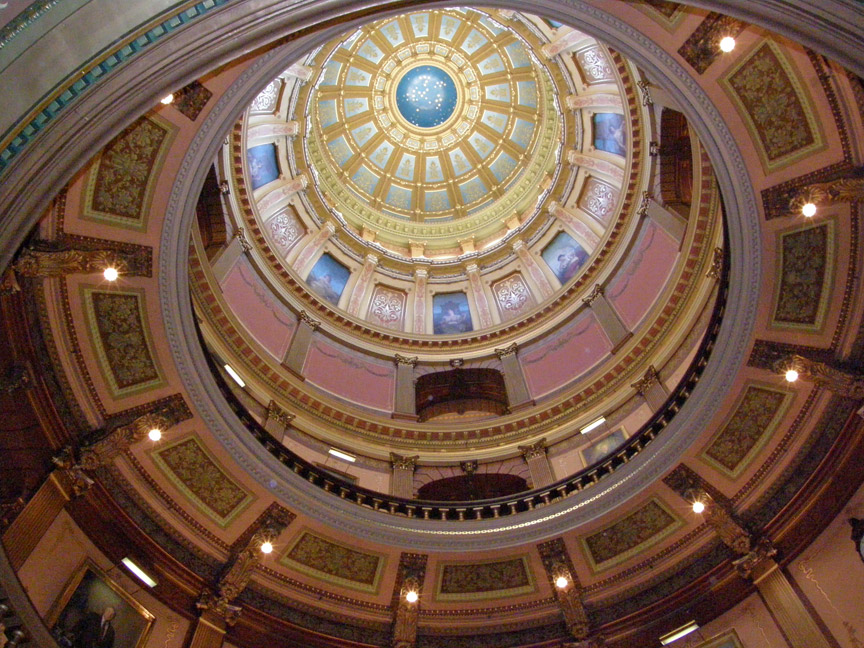
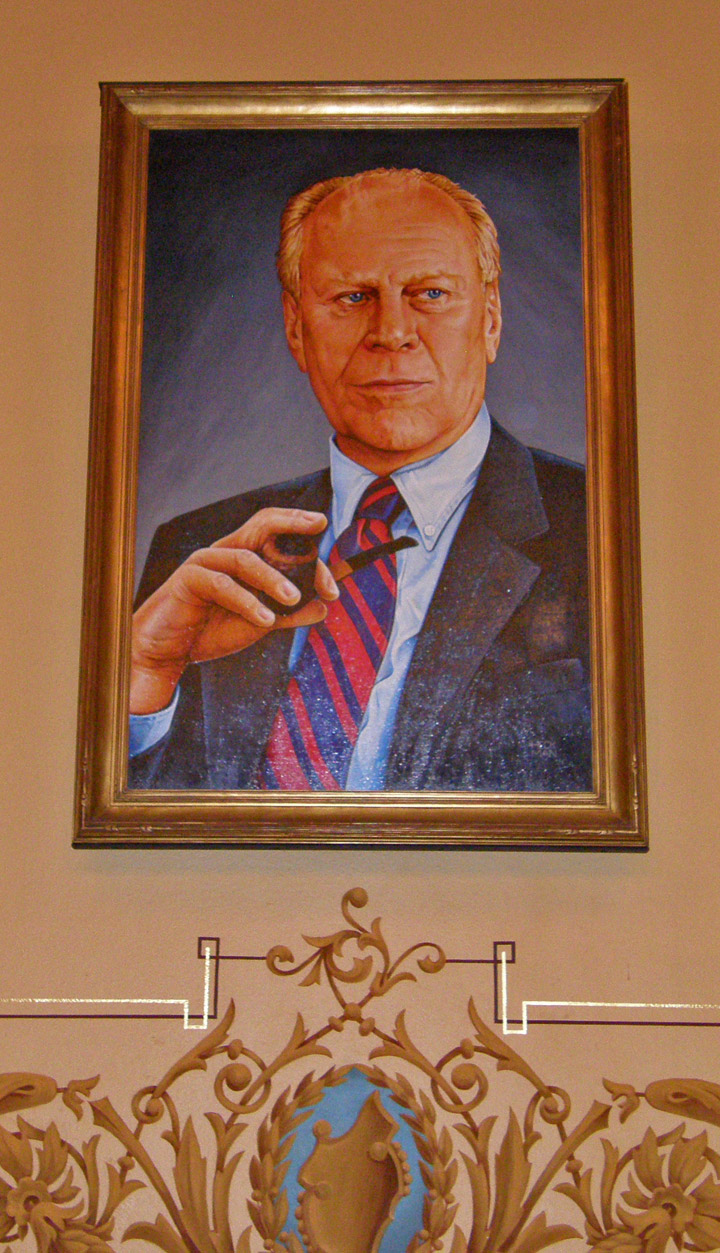
Gerald R Ford, Only U S President from Michigan
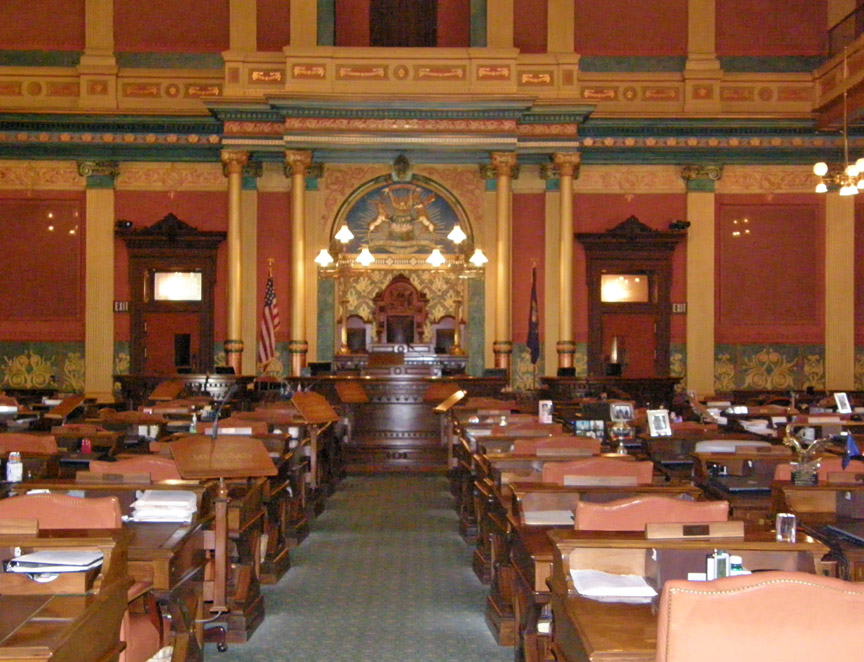
House of Representatives
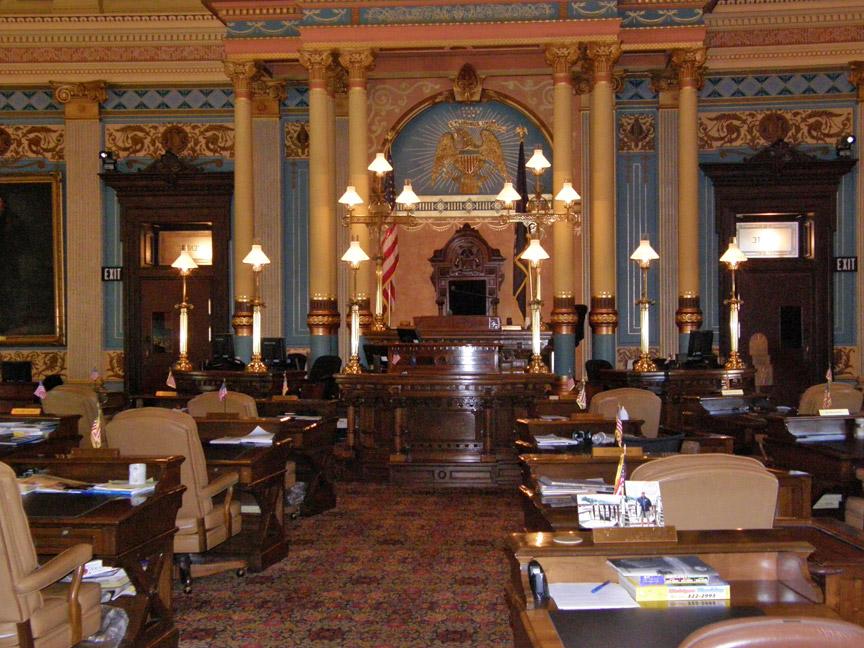
Senate
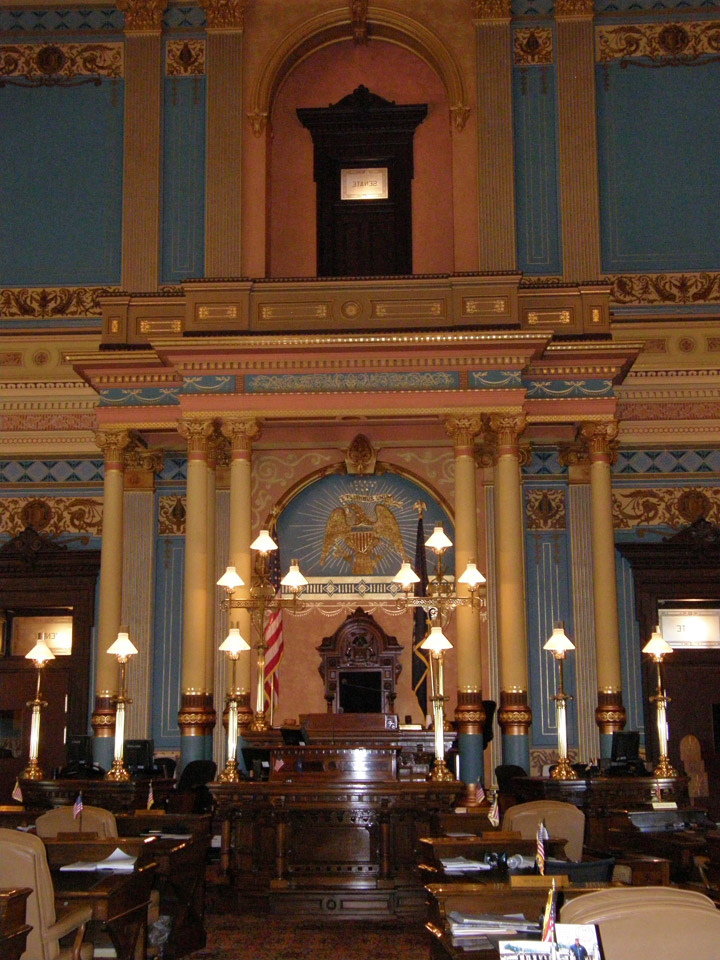
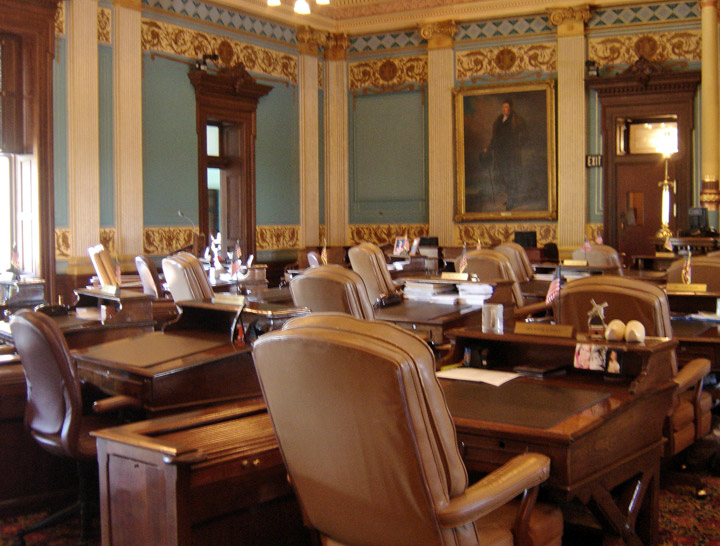
Senate chamber
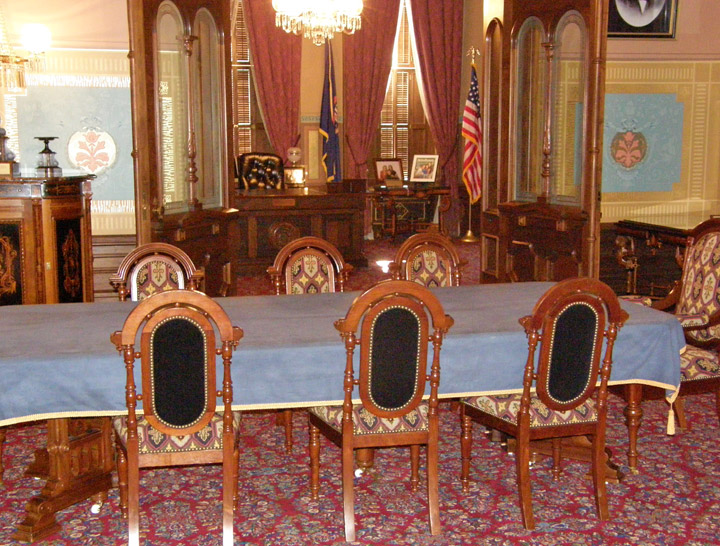
old Governors Office
